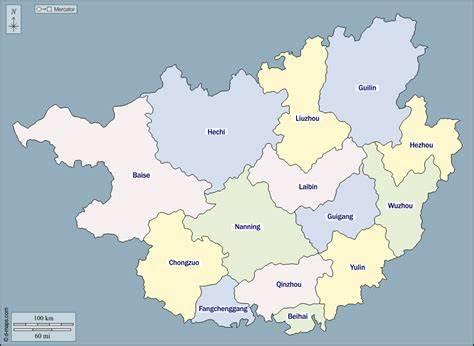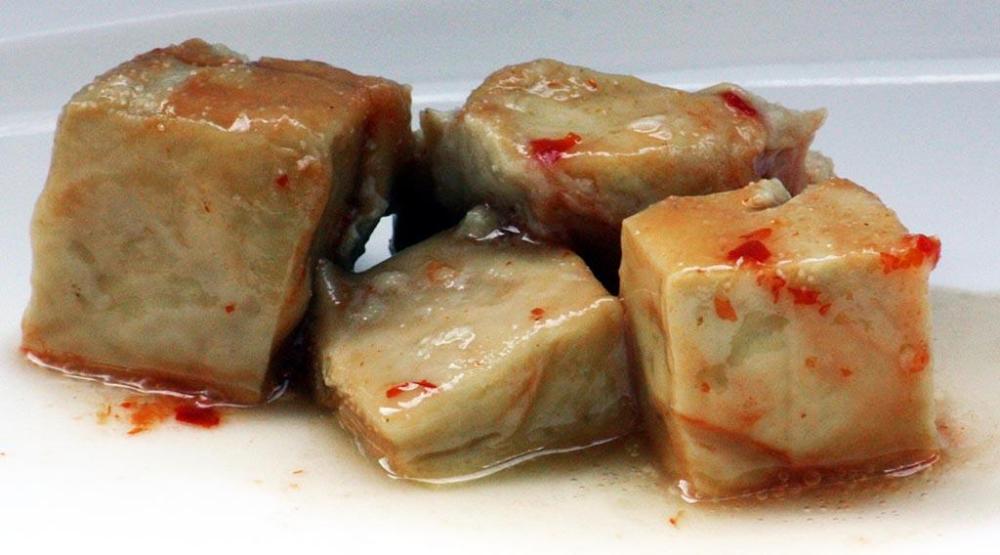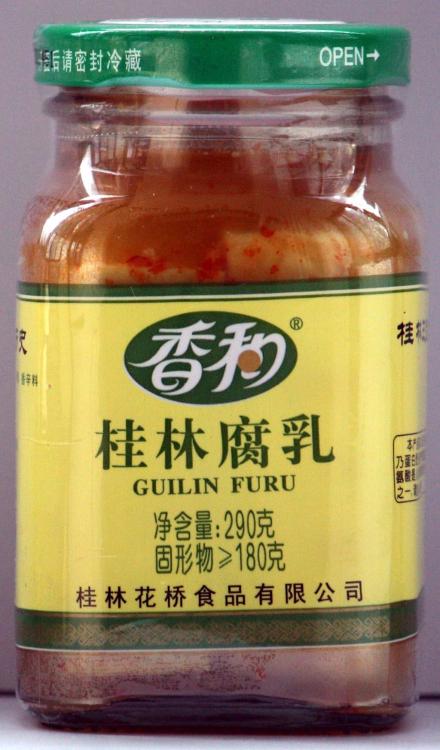When I started out on this topic, I thought there may be around ten posts, but I keep thinking of more local specialities. Before launching into the 40th post, I think I need to clear up some potential confusion in some previous posts, so please forgive a short but hopefully informative pause before continuing.
Several times I have mentioned that a town is part of a city, or even that a county is part of a city. The confusion arises from China’s administration system. Like all five autonomous regions* and 23 provinces, Guangxi is split into prefectures, in our case, at present, fourteen of them. Each prefecture is named for and governed by a city.

Guangxi Prefectures - Low resolution Pubic Domain Image
So, Liuzhou Is a city, but also a large prefecture encompassing several towns, counties and villages. Sanjiang, for example, the town where the Qingming tea I mentioned comes from is part of Liuzhou prefecture, but is miles away from the city, beside the Hunan border. Other fairly large towns in Liuzhou include Rongshui, Rong’an, Luzhai etc. All three are also counties. I dread people asking me the population of Liuzhou. It depends what they mean by Liuzhou.
The same happens in all the other prefectures, so the touristy Yangshuo is part of Guilin prefecture but is a town in its own right. Wuming, home of the lemon duck is a town, but also in Nanning.
* Xinjiang, Tibet, Inner Mongolia, Ningxia and Guangxi. There is nothing really autonomous abut them.
Hope that helps. And now, on with the show.
40. 桂林 (guì lín fǔ rǔ)
Another Guilin speciality, sold at the airport and every hotel and tourist spot is 桂林腐乳 (guì lín fǔ rǔ), spicy fermented tofu. In fact, Guilin airport sells little else. Furu is made all over China (including Taiwan) but the Guilin version is considered to be of top quality.
There are basically two types of furu, basically white and red. Many people make the mistake of thinking that he red must have the chilli on it. Wrong! Both are spicy, the red colour of that variety comes from a red fungus, Monascus purpureus, which grows on rice. Both types of furu go through three stages of manufacture. First soft tofu is cubed and left in a controlled temperature for approximately 5 to 7 days to grow a mould, then it is heavily salted to exclude microbial contaminants.
This also helps the tofu form a firmer crust, although some versions are softer than others. Finally it is finished using a brine flavoured with chilli, other spices and sugar in addition to the salt. Some manufacturers also add rice wine or baijiu (strong grain liquor). Precise recipes are closely guarded. The whole process can take up to three months.
The final product is often compared to a funky blue cheese, at least in texture. It is spicy and umami rich, the latter being more pronounced in the red version. I often drop a cube or two into my morning congee for a wake-up shout. It goes well stir-fried with leafy greens. I particularly like it with spinach, but go for your own preference. It is used, too in some marinades. I’ve known seasoned veterans to eat it in salads like cheese. I always have a jar in the fridge, but it keeps forever unrefrigerated.
Soft Guilin Furu
Furu is widely available on Amazon etc and in Asian markets, although I’m not sure of the availability of the Guilin version. My internet access is limited in the hospital where I currently find myself. Slow wi-fi hinders my VPN, blocking Google etc. Any feedback on international availability would be welcomed.





